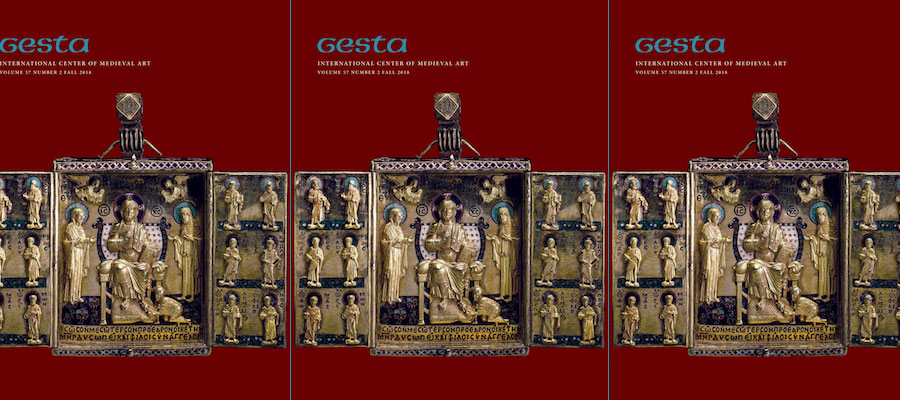Gesta, volume 57, number 2 (Fall 2018).
CONTENTS INCLUDE
A Reconsideration of the Madaba Map
Beatrice Leal
The mosaic map of Madaba, Jordan, has been attracting visitors and puzzling art historians since it was uncovered in the 1890s. The largest extant fragment of the map encompasses modern Jordan, Israel, the Palestinian territories, Lebanon, and parts of Egypt. It depicts rivers, mountains and deserts, villages and cities, and has more than 150 inscriptions that describe them. Previous analyses of the mosaic have been based on two assumptions: that it was designed for an early Byzantine church and that this supposed church was roughly similar in form to the nineteenth-century church that now houses the mosaic. On the basis of this presumed ecclesiastical context, the map has been interpreted either as a pilgrimage guide or as a unique expression of a Christian worldview, displaying all the sacred sites of the Holy Land with Jerusalem at the center. The mosaic does not fit well into a church setting, however, either physically or in terms of its content. It contains little overtly Christian imagery, and it does not resemble other Jordanian church floors in its composition, layout, choice of motifs, or use of inscriptions. In addition, it appears to have been designed for a hall with a north–south axis, not an east–west one. After laying out the case against an original church context, I argue that the map was instead designed for a secular hall, most likely one used for legal hearings, and then discuss some new ways of interpreting the architectural motifs on the map in light of this reading.
The Enkolpion: Object, Agency, Self
Ivan Drpić
The term enkolpion encompasses a broad category of objects—crosses, medallions adorned with Christian imagery, and miniature reliquaries, among others—worn around the neck. Protecting the wearer and providing a constant focus for prayer, enkolpia were arguably the most personal and intimate of all devotional artifacts in Byzantium. They were embraced at confession and appealed to in circumstances of danger and anxiety, intensely scrutinized, caressed, and kissed. Yet the agency of these diminutive objects was not limited to their basic religious function. Enkolpia actively participated in various forms of social interaction. They could serve as gifts, collaterals, and safe-conducts and, most important, operate as physical extensions of their owners. This article explores how the Byzantines used and related to devotional pectorals. It has two objectives: first, to recover the significance of enkolpia as a distinct category of objects; and second, to shed new light on the material culture of personal piety as a critical setting for the formation of subjectivity in Byzantium.
